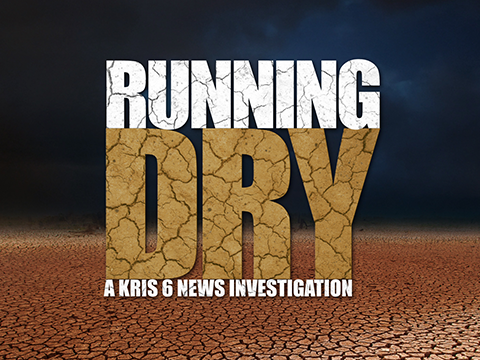Booming energy production has brought jobs and economic gains to communities throughout Texas, but also an unintended consequence with a rise in traffic fatalities and injuries.
The Texas Department of Transportation reminds drivers in those regions to Be Safe. Drive Smart when sharing the road with increased traffic, work crews and heavy, commercial trucks.
Motorists can expect to see a variety of reminders in the coming weeks as TxDOT kicks off its annual “Be Safe. Drive Smart” safety campaign.
This campaign urges drivers to take precautions when sharing the road with heavy trucks and work crews in energy-producing regions that cover more than half of the state’s 254 counties.
“Texas is leading the nation in oil and gas production, and with that, we are seeing an increase in truck traffic. And unfortunately, we are also seeing an increase in crashes and deaths on our roadways,” said Texas Department of Transportation Public Information OfficerRickey Dailey.
Increased traffic and larger, heavier vehicles are changing driving conditions not only here in South Texas, but in many parts of the state.
“What we are asking people to do is just use some common sense to be safe on the road,” Dailey said. “Slow down, take traffic conditions into account, slow down on wet roads, and always buckle up. And if you come up on heavy trucks, give them plenty of room, only pass them if necessary.”
The “Be Safe. Drive Smart. ” campaign is a key component of #EndTheStreakTX, which is a larger grassroots effort that empowers drivers to make safer choices while on the road.
“That means from November 7 of 2000, one person has died on Texas roadways every day. What we are striving to do “End The Streak Texas” is to promote safety on the roadways to remind drivers to be safe. We want a day without death on Texas roadways,” said Dailey.
It is up to Texas drivers to help achieve that goal.
According to law enforcement, the leading causes of crashes in the region were failure to control speed and driver inattention. The most dangerous times of day were around 9 a.m. and 5 p.m.
In 2017, more than 194,000 crashes — an average of 532 per day in the state’s five main oil and gas production regions — resulted in 1,614 deaths and 7,422 serious injuries, a slight increase over the previous year.
TxDOT’s Be Safe. Drive Smart campaign offers the following common sense advice for drivers to help reduce their risk of becoming a crash statistic:
- Always buckle up.
- Pay attention, which means no talking or texting on cell phones or engaging in any other distracting behaviors.
- Give trucks space.
- Drive a safe speed that takes traffic, road conditions and weather into account.
- Stop for all stop signs and red lights.
- Pass carefully.
Here are a few more tips for driving in heavy traffic:
- Don’t tailgate or flash your lights at another driver. Maintain a safe distance from other drivers, so you can stop within the available stopping distance.
- If an accident is to blame for the traffic congestion, do not slow down and survey the scene as you pass by it.
- Keep to the same lane. When vehicles constantly change lanes, the flow of traffic is repeatedly interrupted, preventing the possibility of a consistent pace.
- Stay focused on driving. Don’t use the slow momentum as an opportunity to multi-task or check e-mail.
Fog in your area? Use these tips to be safe:
- Slow down and do not drive faster than your field of vision. Use windshield wipers and defroster as necessary to maximize visibility.
- Increase following distance to ensure enough reaction time and stopping distance. When you use your brakes, don’t stop suddenly.
- Turn on your lights, including your hazard lights. Use low beam headlights and fog lights if you have them. Do not use high beams.
- Use the right edge of the road or roadside reflectors as a guide. If you cannot see, pull completely off the road—preferably at a rest area or truck stop—and turn on your hazard flashers immediately.

